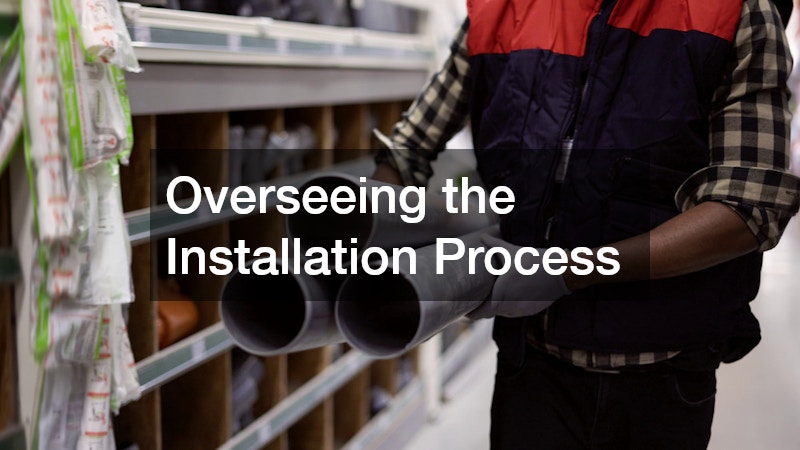Septic systems play a crucial role in homes that aren’t connected to municipal sewer lines, providing an independent waste management solution. Their proper installation is not only vital to health and environmental standards but also essential for the longevity of the system. In this article, we will explore the importance of meticulous preparation and planning to ensure a successful septic system installation, safeguarding both your investment and the environment.
Evaluating Site Conditions
One of the first steps in choosing the right septic system is to evaluate the site conditions, including soil type, the levels of the water table, and available space. Different soil compositions, such as sandy, loamy, or clay, can significantly impact the choice and function of your septic system.
Additionally, a high water table or insufficient space can restrict options, making professional assessment even more critical.
Conducting a thorough soil analysis will help determine the infiltration rate, influencing the type of septic system that will work best. A deep understanding of these site-specific conditions will ensure that the system not only meets local regulations but also functions optimally over time. This proper evaluation is the foundation upon which a successful septic installation is built.
Consulting with Professionals
Engaging with experienced septic designers and engineers is crucial in selecting the right system tailored to your specific needs. These professionals have the expertise to interpret soil tests, assess local ordinances, and recommend the most suitable systems. Their involvement ensures that not only will the system be compliant, but it will also function efficiently for years to come.
The process of installing a septic system is complex, with numerous local regulations that vary by region. Professionals guide homeowners through these requirements, preventing potential fines or system failures. Their expertise helps streamline the installation process, addressing any issues before they arise.
Comparing System Types
When choosing a septic system, homeowners often need to choose between conventional systems and alternative options. Conventional systems are typically less expensive initially but may not be suitable for all site conditions. In contrast, alternative systems are designed to meet unique challenges such as high water tables or small lot sizes, offering flexibility but often at a higher initial cost.
The choice of system is influenced by factors such as environmental impact, maintenance requirements, and long-term costs. For example, an aerobic treatment unit may provide better waste breakdown but requires more regular maintenance and energy use. Each system type has its pros and cons, requiring a careful cost-benefit analysis.
Preparing the Required Documentation
Having the right paperwork ready is a crucial step in obtaining the necessary permits for septic installation. Essential documents typically include site maps and detailed soil analysis reports, which inform the authorities of the planned system’s viability. These documents must meet specific standards and offer detailed insights into the site conditions and proposed solutions.
The site map provides a visual representation of where the septic system will be installed, including the layout of the leach field and proximity to other structures. Soil reports offer information on the soil’s absorption rate, a critical factor that influences system design and placement. Thorough and accurate documentation minimizes the risk of application rejection and expedites the approval process.
Selecting a Qualified Installer
Selecting a qualified installer is a pivotal step that influences the success of your septic system installation. It’s important to research and choose a contractor who is not only licensed but also has a solid reputation and extensive experience with septic systems. Reputable installers will provide references and a portfolio of past projects to assure quality workmanship.
Key criteria for selecting an installer include their familiarity with local regulations, as well as the range of systems they are certified to install. High-quality installers also stay updated on the latest technologies and methodologies, ensuring they can provide effective and modern solutions. This expertise directly impacts the efficiency and resilience of your septic system.
Overseeing the Installation Process
Once an installer is selected, actively overseeing the installation process can ensure that the work is conducted correctly and to standard. Key aspects to monitor include verifying that the system’s location follows the planned site map and that all components meet code requirements. Consistent communication with the installer allows homeowners to ask questions and verify compliance as the project progresses.
Homeowners should be familiar with what a compliant setup looks like to address any discrepancies immediately. Site visits during critical phases, such as the excavation of the leach field or placement of the septic tank, allow for real-time oversight. This proactive approach ensures work proceeds according to plan, addressing potential issues before they become costly problems.
Setting Up a Maintenance Schedule
The sustainability of a septic system heavily relies on a well-structured maintenance schedule once installation is complete. Regular inspections and pumping, typically every three to five years, prevent common issues such as blockages and overflow. Being proactive about maintenance can maximize the system’s lifespan and effectiveness.
Preparing for a successful septic install involves meticulous planning, adherence to regulations, and proactive maintenance. By evaluating site conditions, engaging with experts, obtaining necessary permits, and ensuring high standards during installation, homeowners can secure a reliable and efficient waste management solution. A well-installed septic system not only serves the home effectively but also protects the environmental integrity of the surrounding area.

